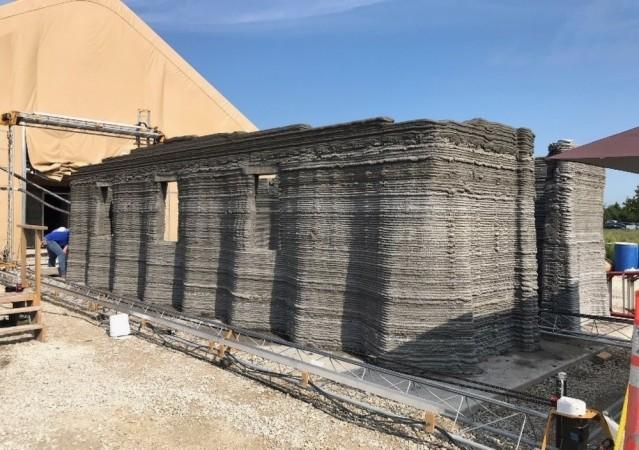
The US Marines has successfully completed a prototype barracks that has been, for the first time in the world, completely 3D-printed in concrete. It was printed using the world's largest concrete-fed printer operated by the Additive Manufacturing Team at Marine Corps Systems Command in collaboration with Marines from I Marine Expeditionary Force.
The barracks were printed out at the U.S. Army Engineer Research and Development Center in Champaign, Illinois. Using an expeditionary concrete 3D printer, the large, 500-square-foot barracks hut was printed out in 40 hours, notes a report by the Marines.
The Corps is, as of now, putting together a deliberate and urgent needs statement as well as a "concept of employment" for this technology, notes the report.
"This exercise had never been done before," said Capt. Matthew Friedell, AM project officer in MCSC's Operations and Programs/G-3.
"People have printed buildings and large structures, but they haven't done it on site and all at once. This is the first-in-the-world, on site continuous concrete print."

Printing process involved just a computer-aided design model, concrete and a massive 3D printer, notes the report. Once the engineers hit print, the concrete started to get layered repeatedly through the head nozzle and the walls started to take shape.
The prototype barracks took 40 hours and that was only because the Marines were constantly monitoring progress and filling the printer with concrete as and when needed. The report mentions that if there was a robot to do the mixing and refilling of concrete, the build can be achieved in about a day, easily.
"In 2016, the commandant said robots should be doing everything that is dull, dangerous and dirty, and a construction site on the battlefield is all of those things," Friedell said.
The idea is to free up soldiers and Marines in the battlefield, putting fewer soldiers in danger while building structures in the middle of hostile territory would be a significant accomplishment, he explained. In active or simulated combat environments, the Marines don't want trained soldiers out in the open, swinging hammers and holding plywood, said Friedell. Using a concrete printer that can make buildings on demand is a huge advantage for Marines operating down range.
Without a printer like this one, the report mentions that it normally takes 10 Marines five whole days to build a barracks hut out of wood. With a printer, the Marine Corps can use just four Marines with a concrete printer and get a similarly strong structure in under two days.
In an ideal situation, the Corps says that concrete printers will be used in the full range of military operations. This includes, but is not limited to, combat environments, disaster relief missions, and humanitarian aid.
The Navy and Marine Corps are often the first on site during natural disasters, notes the report. They are known for being great at bringing food and water, but setting up shelter remains a struggle, Friedell said. He went on to say that in many locations, bags of cement is easier to source than wood for building. In cases where schools, houses, and community centres need to be erected, printers can get it done quickly and safely.

















